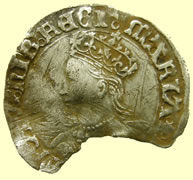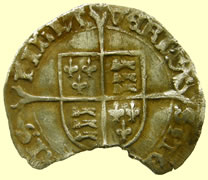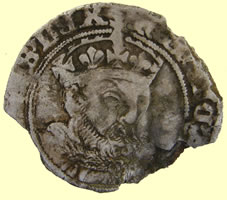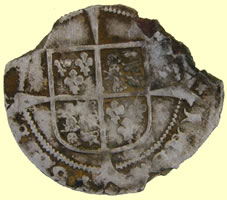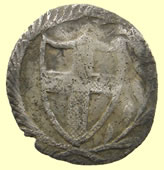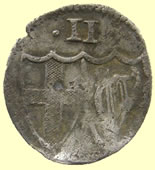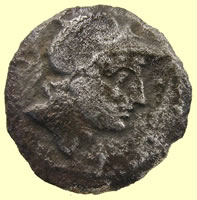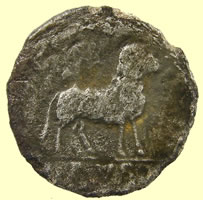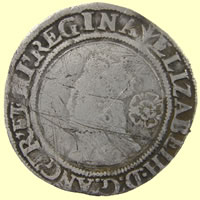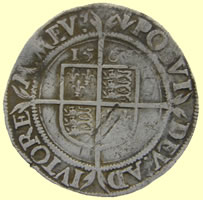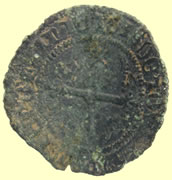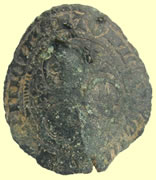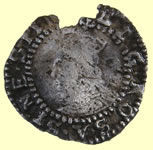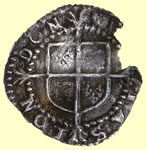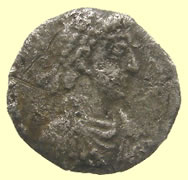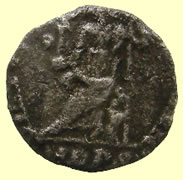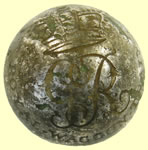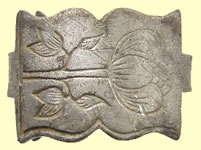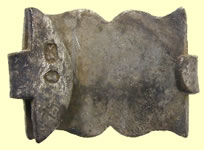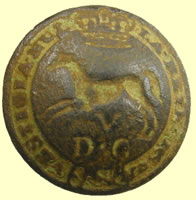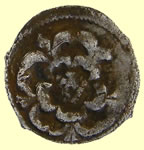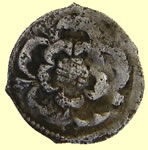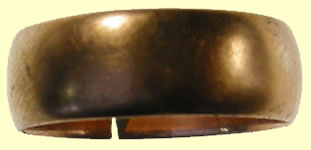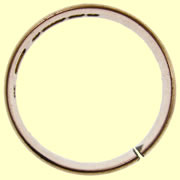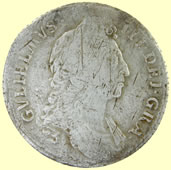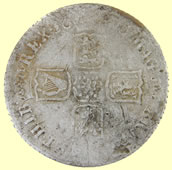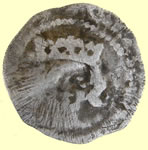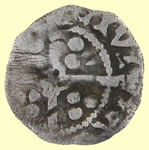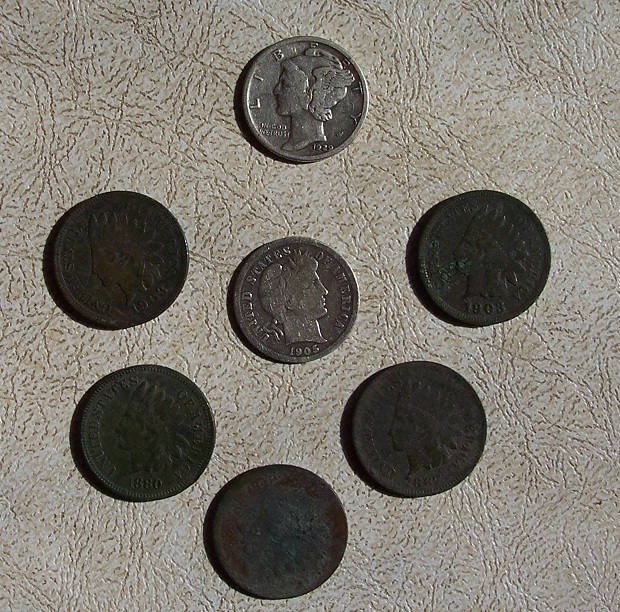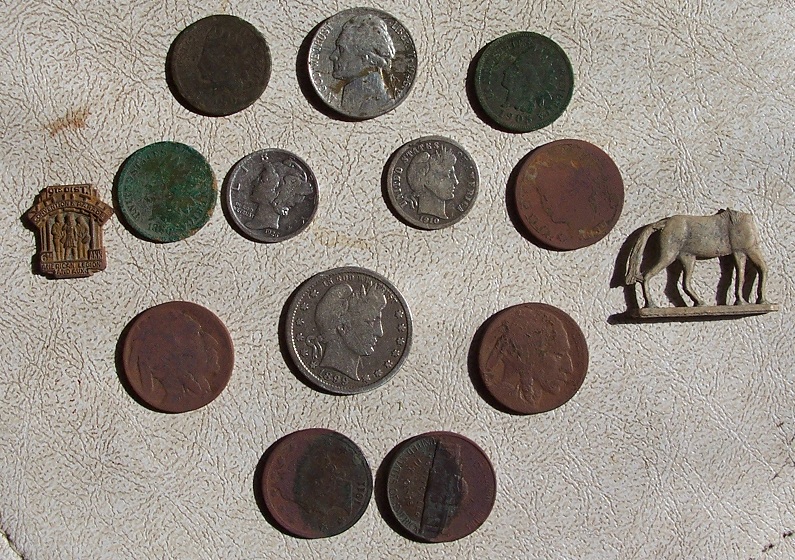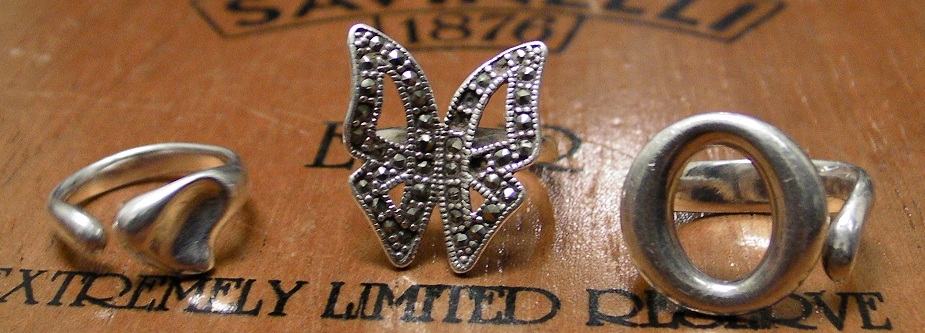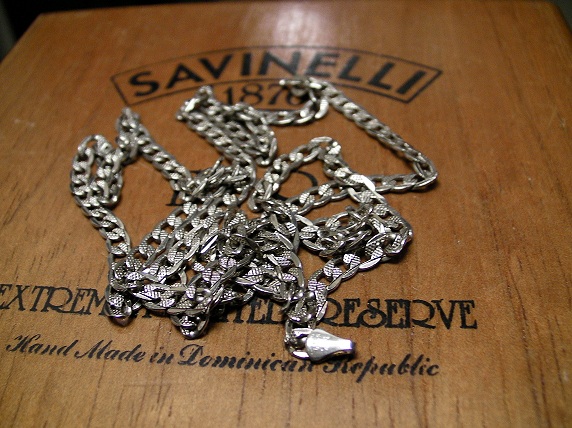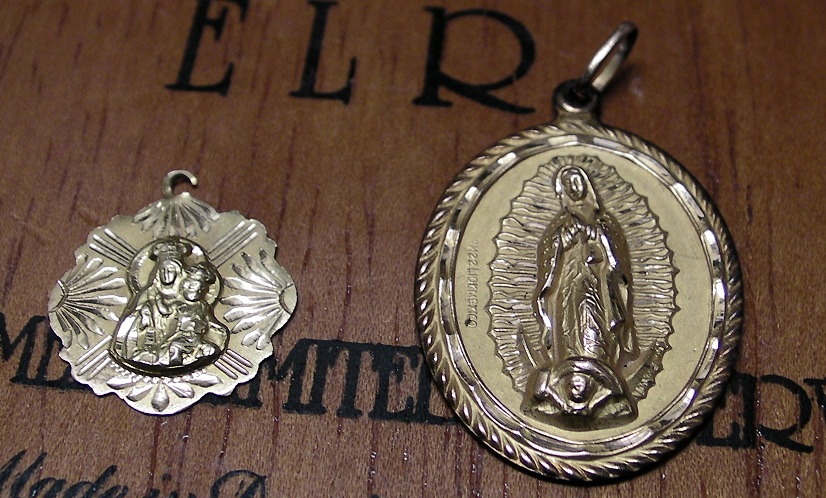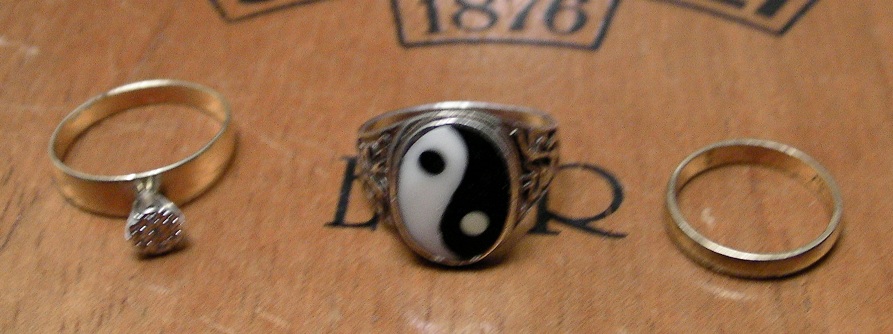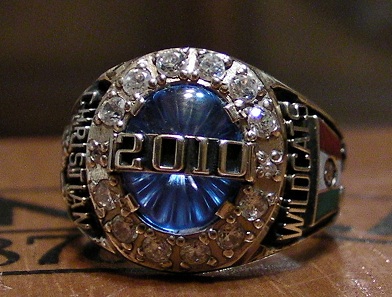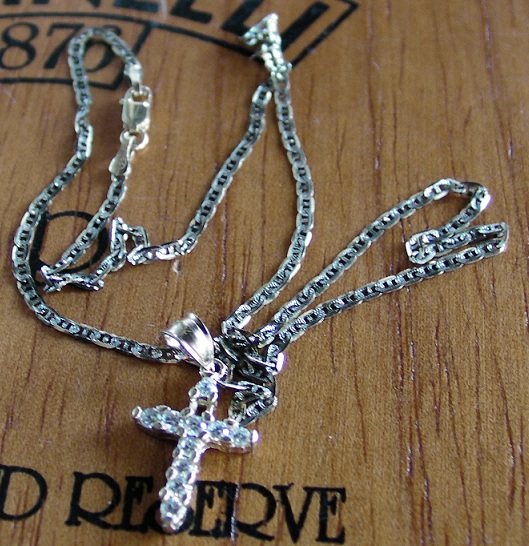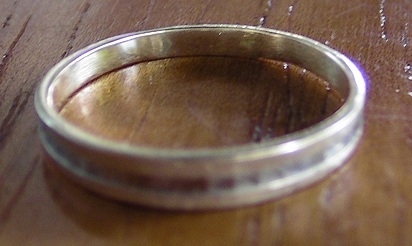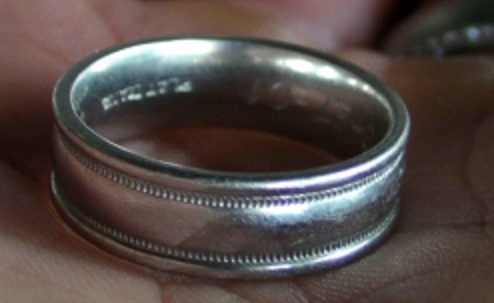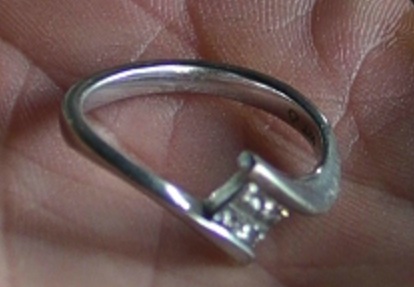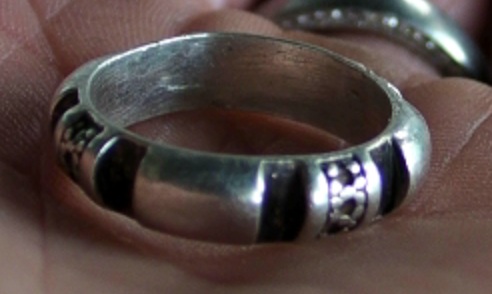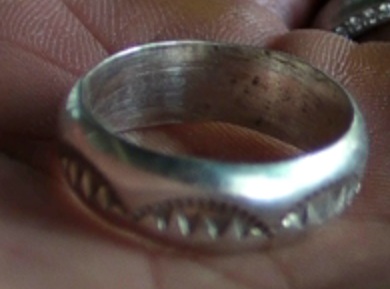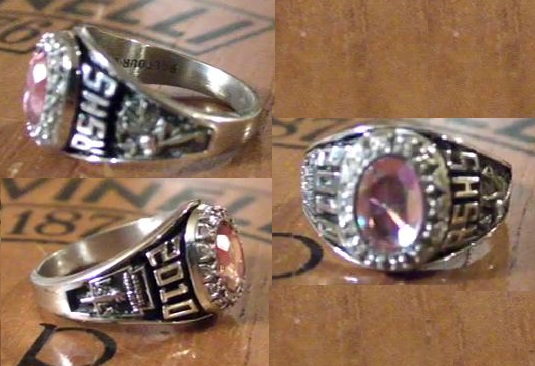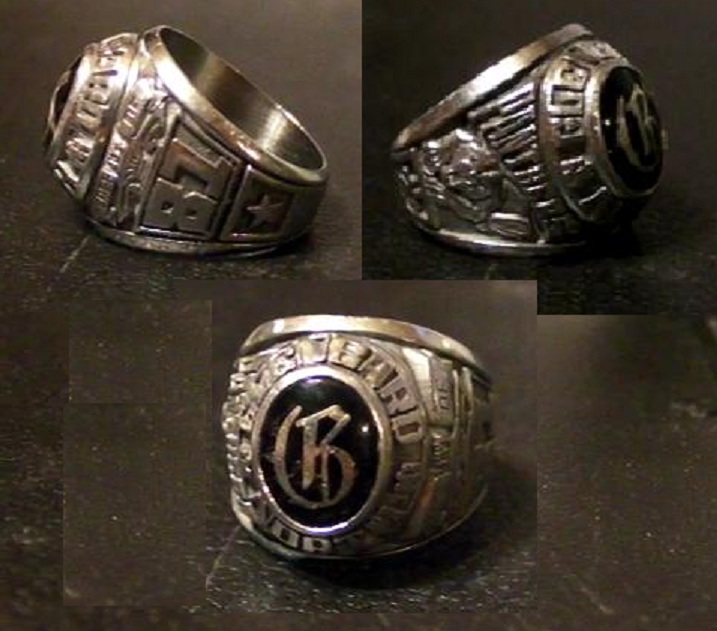| HOME |
| Updated 6/28/2010 | ||
Beach hunt Feb 26 |
Beach hunt March 3 |
Beach hunt Feb 28th |
14K Medalion, 10K earring with 8 .02 diamonds, 14K band |
England Trip 3-12 1554 Mary, Hammered silver Groat |
|
England Trip 3-16. 1544-1547 Henry VIII, Hammered silver groat |
England Trip 3-18
Henry III Hammered silver Shortcross penny fragment |
England Trip 3-18 76 BC Roman Republican Silver denarius , L. Rustias, 76 BC. Obverse: Helmeted head of young Mars right - asterisk-like XVI in monogram below chin, SC behind. Reverse: Ram standing right, L RVSTI in exergue - RRC 389/1, CRR 783, RSC-Babelon Rustia 1, SR 320 It's a little unlikely, but not inconcievable that this coin was still in active circulation when Claudius invaded Britain - it certainly would have been current when Caesar made his ill-fated attempts. So it could have come either in pre-Roman trade, or during an early Roman incursion. |
Engalnd Trip 3-23 1561 Elizabeth Hammered silver Shilling |
1415-1497 French Stock jeton of Tournai - Three circle emblem of Tournai Narrow armed single stranded cross fleuretty
|
1560's Elizabeth Hammered silver penny |
400 AD Honorius Roman Silver siliqua Rerverse VIRTVS ROMANORVM with seated Roma holding globe and spear, The style of the seated Roma is more in line with the end of the 4th century than the 380's - so I would hazard a guess that if we could read the obverse, it would be Arcadius or Honorius - c. 400 - the last two emperors in this era who used Aquilea or Milan.,So it's a siliqua, it has probably been clipped - possibly "officially" clipped to bring the weight into line with Saxon Sceatta. Minted around 400 AD, it was probably in use for something approaching to 2 or 3 hundred years thereafter, although more likely as a part of a store of wealth than as a circulating coin.
|
The Royal Waggon Train (1802-1833) Within a month of being created, part of the Corps arrived in Holland but because of the Treasury involvement, the vehicle establishment of 100 bread waggons, 100 forage carts, 20 hospital waggons and 10 forge carts had not been constructed and even by the time this campaign ended, still nothing had been done. However, some good came out of this campaign in that it was generally acknowledged that an organised transport service was essential and that disciplined people accustomed to horses must be recruited. A pause in hostilities brought about by the Peace Treaty of Amiens in 1802 gave a short breathing space to the contending powers. By May the following year, Britain and France were again at war with France amassing an invasion army. Following Nelson's victory at Trafalgar, the French marched away from the Channel to fight their continental enemies. In 1807 they invaded the Iberian Peninsular determined to close all European ports to Britain. In 1808 Sir Arthur Wellesley sailed to seize the naval base at Lisbon. He took with him two troops of Irish Commissariat Waggon Corps. By October these two troops had been incorporated into the Royal Waggon Train, bringing the strength to twelve troops - a total strength of 2000 all ranks. Echelon duties in support of the Commissariat continued but now, where transport columns had to be protected, the Royal Waggon Train was increasingly involved in providing close support to the combat arms. It became normal practice to split the organisation into small detachments in direct support of infantry or cavalry. The landing in Portugal was to the north of Lisbon on the beaches at Mondego Bay. It took a while but it did give Wellesley the time to organise his logistic support in a way which was to become familiar during his campaigns. He was a master at solving logistical problems having learned his lesson whilst fighting in India. His task was to ensure "the final and absolute evacuation of the Peninsula by troops of France". Whitehall, however, maintained its ignorance of the logistics involved in a military campaign fought by an army over difficult terrain. Within a month of landing in Portugal, Wellesley gave the French a foretaste of the capabilities of the British Army by defeating them at Rolica and Vimeiro. The command of the British Army in the Peninsula during the winter campaign 1808-09 now passed to Sir John Moore, Wellesley having temporarily fallen out of favour for his involvement in the Treaty of Cintra which allowed the defeated French to sail home in British ships. In October 1808 a British force under the command of General Sir David Baird landed at Corunna followed a weeks later by three troops of the Royal Waggon Train. It was Moore's intention to hit the French lines of communication but he was forced to retire when he came up against Napoleon's army - a ratio of more than 6 to 1. His retreat was no easy matter as waggons provided from local resources broke down and the hired drivers deserted with their teams. Other waggons were too wide or inappropriate for the narrow roads. Additional horses had to be harnessed to pull these waggons thus reducing the overall number of supply waggons. The sprung waggons were used as ambulances with two men lying or eight men sitting. Morale and discipline of the troops began to suffer and storage depots set up by Baird were ransacked by Moore's retreating troops. This retreat ended with the Battle of Corunna in 1809 where Moore was mortally wounded. The Royal Waggon Train ended up being employed on mundane transport tasks and in 1815 was reduced to five troops and three years later to two before being disbanded in 1833. |
18thc solid silver decorated clog fastner - PB over AB markers mark London and bust hall marks Peter & Ann Bateman PB/AB. 1791 - 1800 Bateman workshop at Bunhill Row London 1794
|
Unrecorded 5th Dragoon Guard Button Crimera war period
|
Solid silver dragon brooch - 1948 London hall mark |
|
1917 2 ANNAS, India |
1625-42 Charles 1st hammered silver half penny - Rose each side - no legend type Probably one of the smallest hammered silver coins you can find, 1/3rd the weight of a Medieval silver farthing 0.17g, 9.5mm
|
|
1890 9 carat gold ring - Birmingham hall mark - Marker JM 3.36g, 18.95mm |
1696 William III milled silver shilling
|
1422 Henry VI hammered silver penny - York mint - Archiepiscopal issue Quatrefoil with pellet at centre of reverse cross
|
4-16 Hit a park for a couple hours 1929 merc and a 1905 barber dime plus 5 indians |
4-22 I hit the woods for a change what a fun day! 1899 barber quarter,1910 barber dime 1926 merc that had to be at 10" 2 buffalo and 2 V nickles plus a couple indians. |
6-19 3 silver rings at the beach 2 are Tiffany. NICE! |
Short hunt at the beach before work yields a 35" long 14K white gold chain. First chain in 2 years for me. |
6-24 Another good day at the beach small 18K and large 14K medalions. |
6-25 Hit a couple beaches this morning, 14K kids ring with emerald, 14K kids heart ring |
6-28 Out by myself today, found a nice honey hole. 10K ring with 8 chip diamonds, silver yin and yang ring, 10 K wedding band. |
6-30 2010 14K class ring, 20.1 grams RETURNED! |
7-1 small 10K chain and cross 3.5 grams, 14k gold band 2.1 grams, DIANA Platinum wedding band size 9, 11.6 grams Now that a good day at the office! |
7-15 , 14K ring with 4 diamonds, silver ring, silver ring, |
7-20 another High School ring RSHS class of 2010. 10K 6.1 grams RETURNED! |
7/22 Got out for several hours this is my 3rd HS ring in 10 days. Will take some serious research to return this one as it only has a nick name inside, Class of 1981, ultrium |
